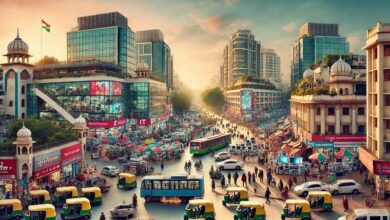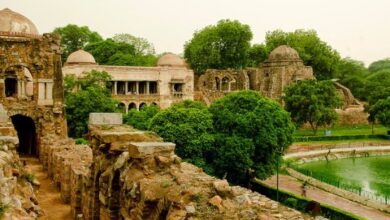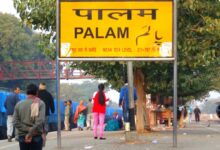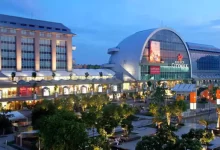15 Incredible Tourist Places to Visit in Delhi
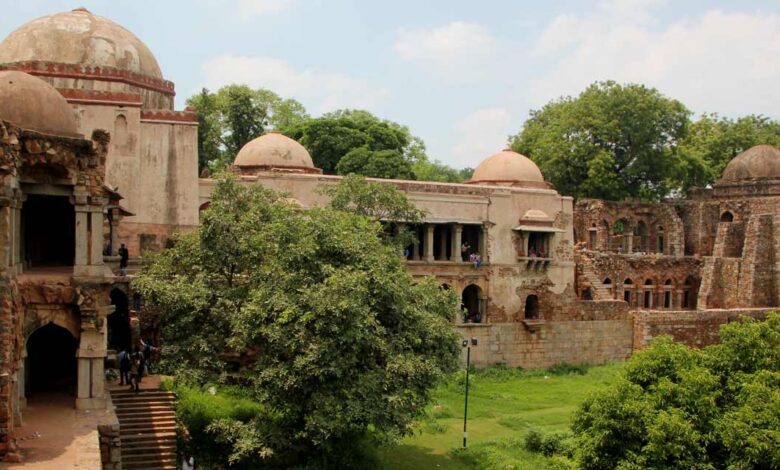
If there’s one word that can be used to define Delhi, it is ‘Experience’. Yes, such is the aura of the city. Delhi is inviting, enticing, challenging, enjoyable, enriching, all at the same time. Residing in the heart of the country, Delhi is aptly termed as “Bharat ka dil”. It’s a city that gives you what you may not get anywhere. It’s a career maker, Its a kingmaker. It’s the government maker. It is business maker… and what not. Delhi is all about life, and the way life should be.
A unique blend of history and modernity, traditions and culture, commerce and fashion and beyond all of these, a place where all religions prevail with equality. Delhi is unique in its culture and lifestyle. While in areas like Chandni Chowk and old Delhi, you will find the traditional ways of living, places like Vasant Kunj and South Extension will give you a sense of modern-day Delhi.
The latest and greatest fashion in the country is seen first on Delhi’s streets. If you are a foodie, there’s no better place to go for than the heart of the country. On the one hand, you can get lip-smacking street food which is very cost-friendly too, and on the other side, you get to eat some of the most expensive international dishes in city restaurants.
In a nutshell, if you want to witness crazy yet sophisticated part of life, do visit Delhi at least once in a lifetime.
… And while you are in Delhi to experience the true fervor of the city, here’s a list of must visit places that you must explore. Check it out.
1. India Gate
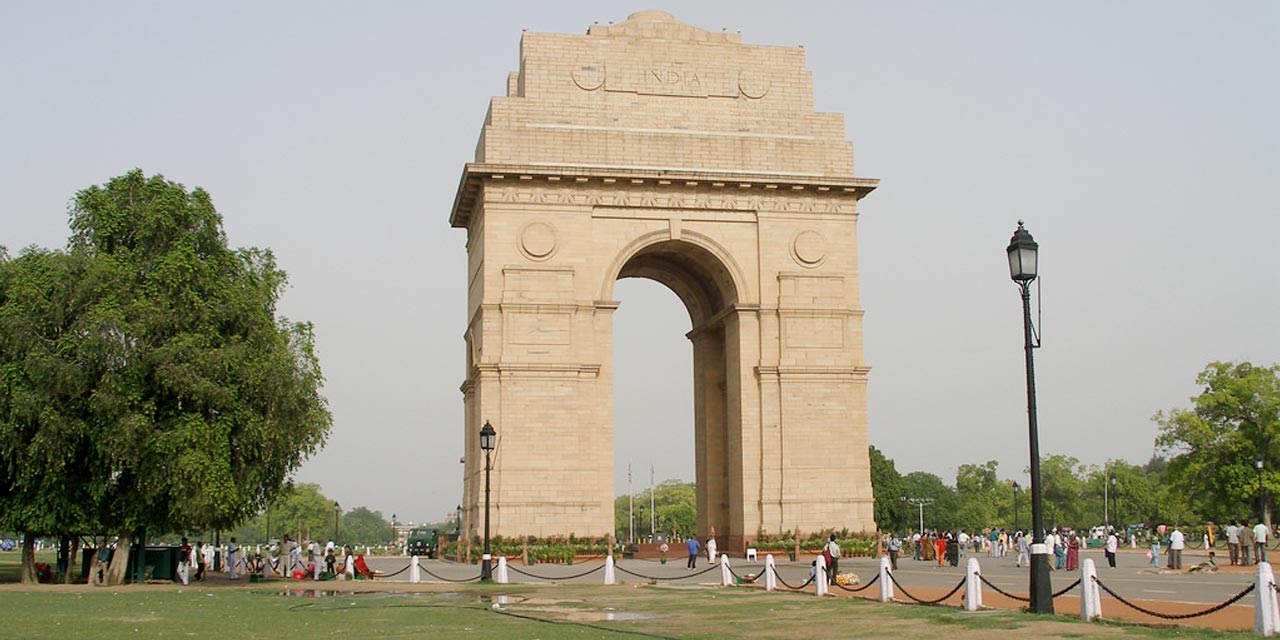
This 42 meter high “Arc-de-Triomphe” like archway situated in the heart of Delhi city is much taller in the hearts of India. Formerly known as All India War Memorial, India Gate was built to commemorate the death of 70,000 British Indian soldiers who died during First World War between 1914-21.
Even though the India Gate was constructed as a war memorial, the architectural style of the monument makes it appear like an epitome of triumph. Much similar to Arch of Constantine, outside the Colosseum in Rome, India gate was designed by Sir Edward Lutyens.
India Gate got an additional structure in the form of a black marble plinth, with a reversed rifle capped by a soldier’s helmet after the Bangladesh Liberation War in 1971. This structure is situated beneath the memorial archway and is bounded by flames on four eternal sides. This is called Amar Jawan Jyoti. India Gate is counted amongst the most significant war memorials in the country.
What we all know is that India Gate has an essential place in the Indian history, but what many of us may not know is that the memorial has an important spot in the heart of Delhiites. Whenever there is a moment of distress or an occasion to celebrate, India Gate is the perfect spot for that.
People visit the place with families to spend some quality time with each other. Food vendors around the area add to the pleasure of hanging out with family and friends.
2. Red Fort
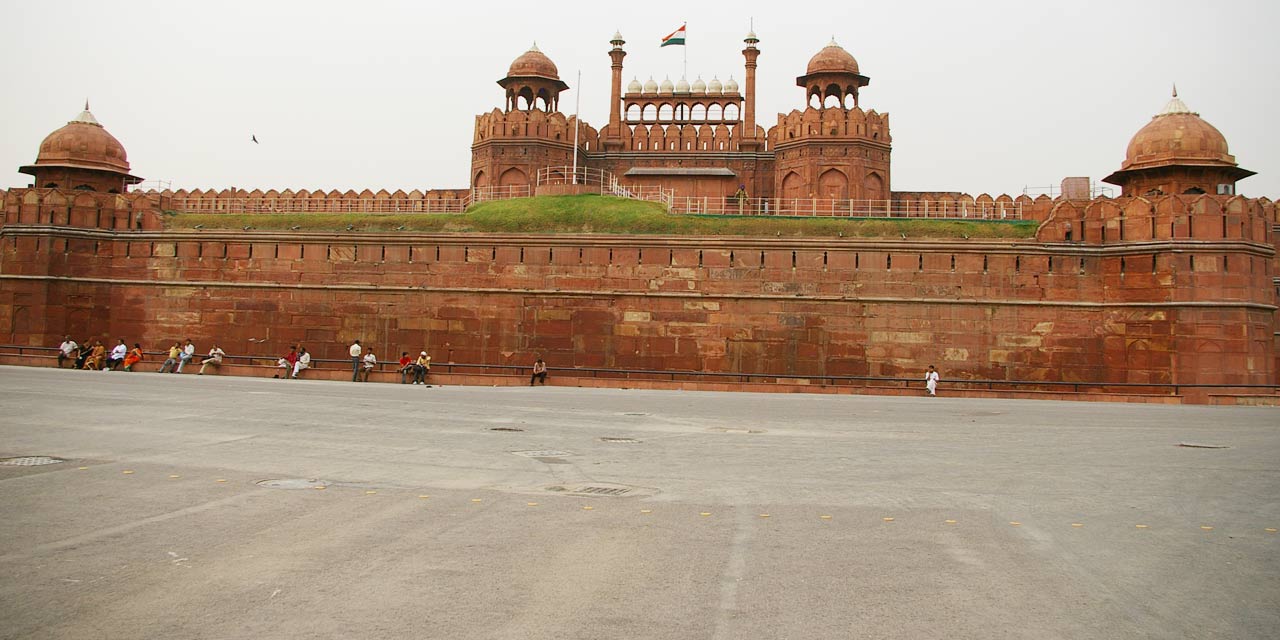
Red Fort, popularly known as Lal Quila, is the pride of the nation. It is a historic fort, situated in the older part of the city. Lal Quila served as the primary residence for Mughal Emperors who ruled the city, for about 200 years. It was until 1856 that the Mughals had resided in Lal Quila. Besides, the historical monument also served as the political center of the Mughals.
Red Fort was built under the reign of Mughal emperor Shah Jahan in the year 1639. It was made on the lines of Shah Jahan’s palace in his fortified capital Shahanabad. It was called Red Fort because of its massive closed walls built in red stone. The palace not only showcases the architectural brilliance of Shah Jahan but also gives a reasonably good picture of Islamic architecture of those times.
Located at the center of Delhi, Lal Quila houses many museums and pavilions. Each pavilion of Lal Quila speaks volumes about the valor and pomp of Mughal empire.
The architectural elements of Lal Quila reflect a typical Mughal building and showcase a fusion of Timurid and Persian traditions. However, the fort saw enough destruction during the invasion of Mughal Emperor Nadir Shah in 1747, followed by the intrusion of British in the Revolt of 1857.
However, the Red Fort has not lost its sheen. It still stands magnanimous in the cultural and political scene of the country. Each year, on the Independence Day (15th August), India’s Prime Minister hoists the Indian Flag and delivers his speech to the nation. The Red Fort was honored to be a UNESCO World Heritage Site in 2007.
Red Fort is a major attraction for tourists visiting the city all around the year. Chatta Chowk, its vaulted arcade is a local market that sells tourists trinkets. One can reach the main compound of Lal Quila after passing through the Chatta Chowk.
This fascinating building comprises of Drum House, the Hall of Public Audiences, the white marble Hall of Private Audiences, the Pearl Mosque, Royal Baths and Palace of Color. One of the major attractions of Lal Quila is the evening Light and Sound show. India’s glorious history is recreated every evening during the show.
3. Chandni Chowk
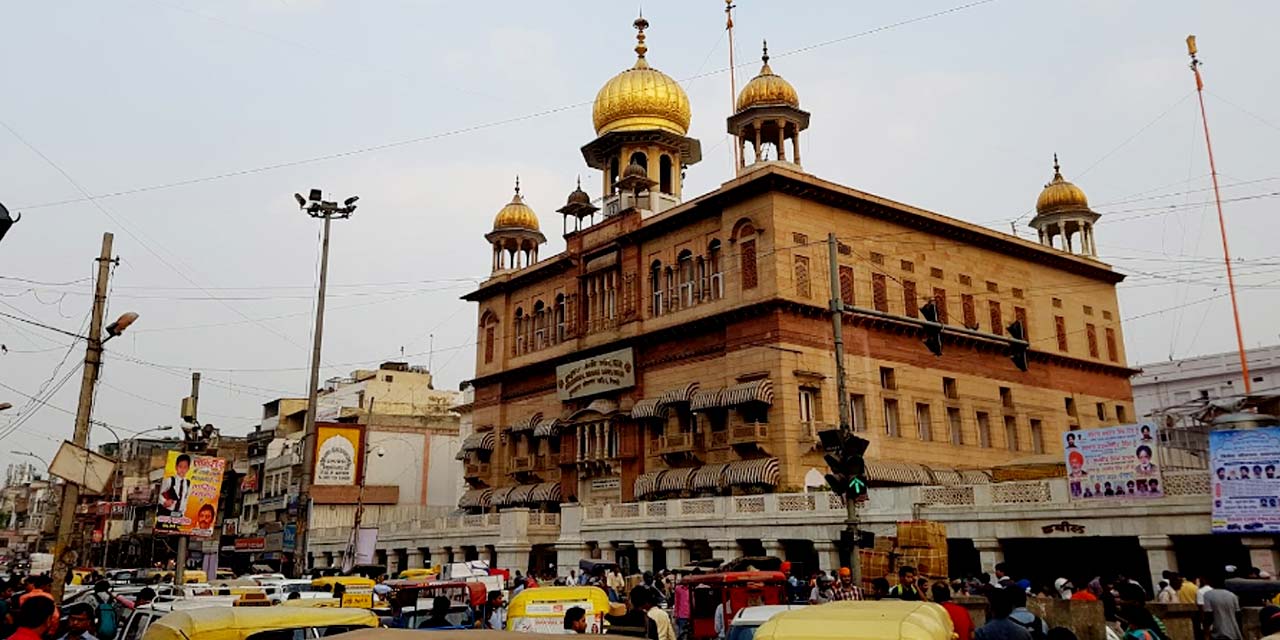
Chandni Chowk or “Moonlight Square” is one of the memorable gifts of the Mughal Era that Delhi cherishes till date. Being one of the oldest and busiest markets of the country, Chandni Chowk is a center of attraction for traders as well, besides the tourists who come to visit the city. Chandni Chowk was designed and built by Mughal Emperor Shah Jahan’s favorite daughter Jahan Ara Begum in 1650 CE. The marketplace was 40 yards wide and 1520 yards long.
There’s an exciting story behind the naming of the place. Chandni Chowk was built in a square shape and had a pool at the center. The pool radiated moonlight at nights, giving a mesmerizing experience. This is possibly the reason why the marketplace is named as Chandni Chowk.
Chandni Chowk is famous for a whole lot of reasons besides being one of the biggest and oldest markets of the country. This part of Old Delhi houses many religious and historical monuments. Red Fort, the pride of India, is situated next to Chandni Chowk.
Besides, Chandni Chowk houses a whole lot of religious places too. People from various faiths visit the place. Sri Digambar Jain Lal Mandir, Gauri Shankar Temple, Shri Shiv Navgrah Mandir Dham, Central Baptist Church, Gurudwara Sis Ganj Sahib, Sunehri Masjid, and Fatehpuri Masjid are some of the religious sites situated in Chandni Chowk. Each of these places is not just religious but also have historical backgrounds.
Chandni Chowk continues to be one of the biggest markets of the country. In fact, it is the biggest wholesale market in the country. One can find shops in the narrow bylanes of Chandni Chowk and can get some of the most amazing deals there.
Apart from hundreds of shops of traditional Indian dresses for both men and women, the wholesale market of hardware, hotel kitchen equipment, industrial chemicals, silver and gold jewelry, spices, dried fruits and nuts, and herbs is a unique attraction amongst the visitors.
Your visit to Chandni Chowk is incomplete if you do not try the eateries in the marketplace. This place is famous across the globe for its mouth-watering delicacies. The Parathe Wali Gali at Chandni Chowk is famous for its variety of parathas. From the regular Aloo ka paratha to the extraordinary bhindi paratha, the variety of parathas available here will leave your taste buds wanting for more. Besides, places like the Ghantewala halwai, Natraj’s Dahi Bhalle, Chaatwallah, the jalebiwala, Gole hatti, et al, will enhance the experience of the place for you.
Chandni Chowk has found a place in films as well. Movies like Kabhi Khushi Kabhie Gham, Delhi 6, Black and White, Chandni Chowk to China, etc. have featured the beauty of this part of Delhi beautifully.
4. Humayun’s Tomb
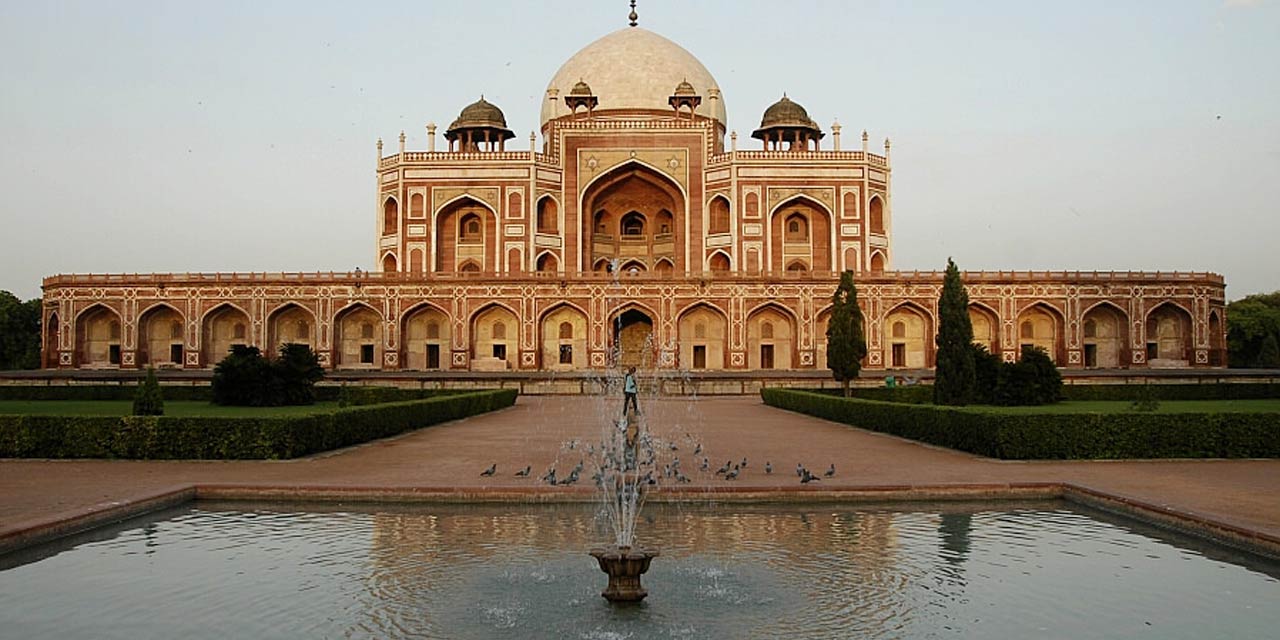
The tomb of Mughal Emperor Humayun, called Humayun’s Tomb, was built in Delhi in 1569-70. The construction of Humayun’s Tomb was commissioned by his first wife and chief consort Empress Bega Begum.
It was designed by Mirak Mirza Ghiyas and his son, Sayyid Muhammad along with some Persian architects, who were chosen by the Begum. Located in Nizamuddin East, Humayun’s Tomb is the first garden tomb of Indian sub-continent. It was declared UNESCO World Heritage SIte in 1993.
The complex of Humayun’s Tomb not just houses the tomb of Emperor Humayun, but also the graves of Bega Begum, Hamida Begum and also Dara Shikoh, grandson of Emperor Humayun and son of Emperor Shah Jahan. The building of tomb is a perfect showcase of Mughal architecture and the way it has evolved.
Besides, the main building, the Charbagh gardens of Humayun’s Tomb are also a significant attraction. Built in typical Persian style, these gardens serve as a rest area for the visitors.
Humayun’s Tomb is constructed in Nizamuddin area of Delhi. This site was chosen keeping in mind the proximity of the place to Nizamuddin Dargah, the mausoleum of Sufi Saint Hazrat Nizamuddin.
The architecture of Humayun’s Tomb is rather impressive. This mesmerizing architecture is given true showcase Persian styles of Islamic architecture. The tomb is about 47 meters high and 91 meters wide. The exterior of the monument is simple and symmetrical. The dome of Humayun’s Tomb is a special attraction. So do ensure that you tick the place in your list while you visit Delhi.
5. Connaught Place
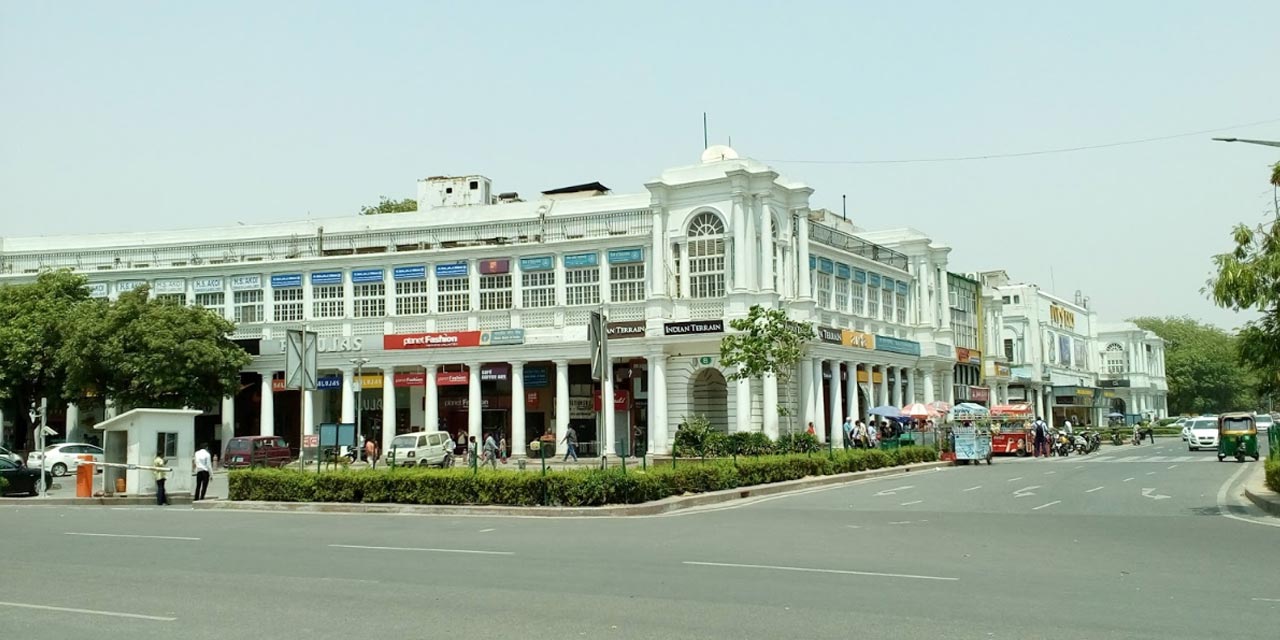
Connaught Place is one of the largest commercial and financial centers of the country and the world. Popularly known as CP, the place houses the headquarters of some of the biggest Corporates. Besides, it is a fashion destination too. Some of the biggest brands in the world have their showrooms in Connaught Place.
It is worth mentioning here that Connaught Place is one of the most expensive real estate in the world. CP was termed as the showpiece of Lutyens’ Delhi. Courtesy its fantastic structure and architecture, Connaught Place is considered to be one of the top heritage sites of the city and pride of the country. The place is named after Prince Arthur, 1st Duke of Connaught and Strathearn. The marketplace was built between 1929 – 1933 and is still a masterpiece in its own right.
The Georgian architecture of Connaught Place is borrowed from Royal Crescent in Bath. Connaught Place is built in a circle and has two floors. The idea was to provide commercial space on the ground floor and residential area on the top level.
CP is divided into two concentric circles, bifurcating the place into the inner circle, middle circle, and outer circle. The three circles are joined by the seven roads emerging from the inner central park.
The government wanted to build New Delhi Railway Station in CP, but the plan couldn’t materialize due to the scarcity of space. Hence, the station was built in Paharganj area, next to Connaught Place. Connaught Place is famous not just for its architecture and heritage, but also for its cinemas and eateries.
Earlier, traders from Kashmere gate area used to travel to this marketplace. But later, it became the entertainment hub of the elite. Regal Cinema, the first cinema of Connaught Place used to host favorite concerts, ballet performances, and theatre groups. Odean and Rivoli cinemas came up later.
Connaught Place is also known for Wenger’s, the first pastry shop in the city, set up by a Swiss Couple. The pastry shop exists to date.
Post independence, Connaught Place got its first underground market, called Palika Bazaar. It was set up in the empty block under the inner circle. The Bazaar has expanded its wings towards the outer circle now.
6. Qutub Minar
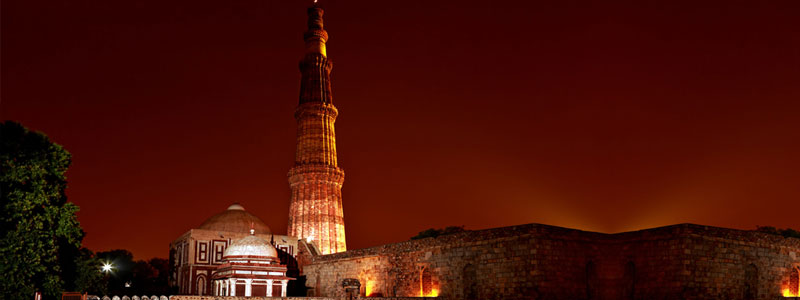
Qutab Minar, Qutb Minar or Qutub Mina spell it as it suits you. Spelling could defer from historian to historian, but the charm of the building remained the same throughout the history. This 73-meter tall minaret has five stories. Interestingly, the base diameter of the structure is 14.3 meters, while it slims down to 2.7 meters as it approaches the top.
Qutub Minar draws inspiration from Minaret of jam, built in Afghanistan. It is believed that Qutab Ud-din Aibak, the founder of Delhi Sultanate, started building the minaret around 1192. He is credited to have built the first floor of the five-storeyed minaret. However, the task was taken up by Aibak’s son-in-law and successor, Iltutmish, who has added three more stories to the minaret in the year 1220.
The Qutab Minar that you see today was, however, completed by Firoz Shah Tughlaq. There was a lightning strike in 1369 that had destroyed the top floor built by Iltutmish. Tughlaq not just repaired the damaged floor, but also constructed another deck on top of the building to complete it. Sher Shah Suri made another addition to the building while Humayun was in exile. He created an entrance to the minaret as well.
Qutub Minar is not the only place to visit in the minar complex. It is surrounded by a lot of places with historical significance. The Quwwat-ul-Islam Mosque is in the same premises and is as old as the minaret itself. There is an iron pillar, which is very old and popular.
Let’s talk about the architecture of the minaret. As mentioned earlier, the makers have drawn inspiration from Afghanistan Minaret of Jam. The incorporation of looped bells, lotus borders, and garlands in its carving give it the local effect. Qutub Minar has stood the tests of time and rulers. The place is definitely worth a visit.
7. Lajpat Nagar Market
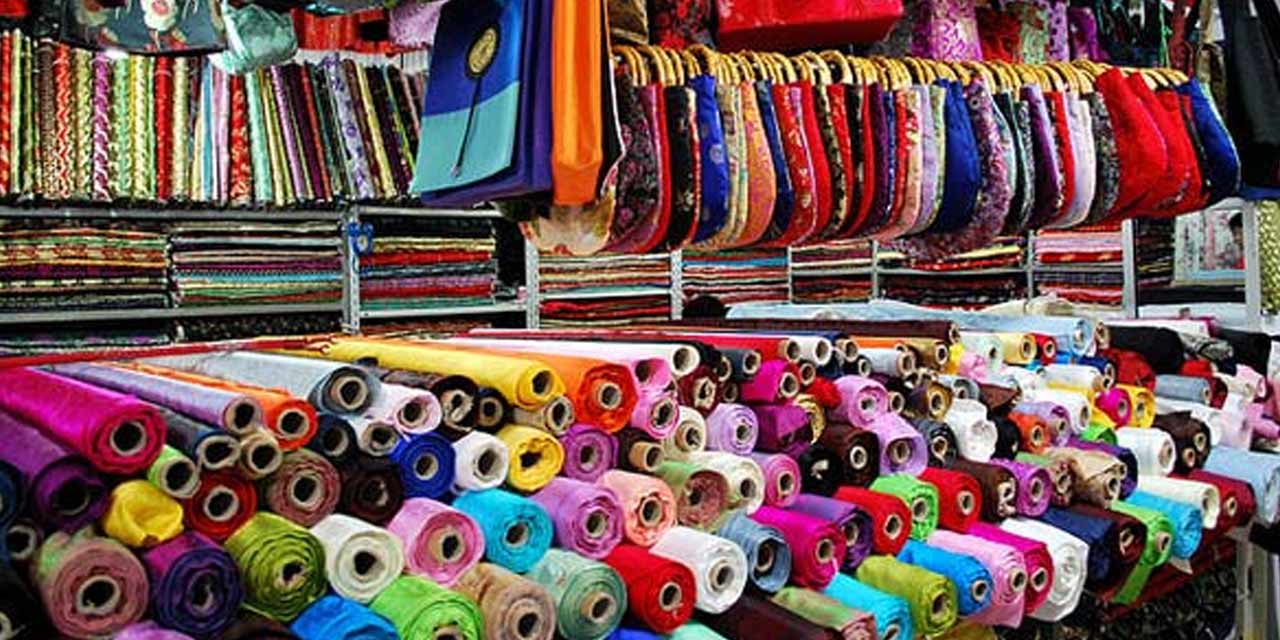
Delhi is a shopper’s delight because of places like Lajpat Nagar market. It’s a residential and commercial place in the southern part of Delhi. Named after Lala Lajpat Rai, the Lion of India, the place is extremely popular amongst markets across the nation.
The area is divided into four parts: Lajpat Nagar I, Lajpat Nagar II, Lajpat Nagar III and Lajpat Nagar IV. Popular residential areas like Amar Colony, Dayanand Colony, Double Storey, Vikram Vihar, etc., fall into the domain of Lajpat Nagar. However, the place is known to be a shoppers’ delight.
The ladies salwar suit market of Lajpat Nagar is famous worldwide. The kind of variety you get there is unmatchable. Besides, the garments and textiles shops in Central Market are a delight. You get the latest and unique fabrics at the most reasonable costs.
Lajpat Nagar was developed after the refugees from new Pakistan came to this part of the country. There were Sikhs and Hindus, who were provided shelter by the government and were allotted lands to construct houses for themselves. Nowadays, it is a preferred location for travelers from places like Middle East, Afghanistan, Africa, who travel to India for medical aid or education.
8. Lotus Temple
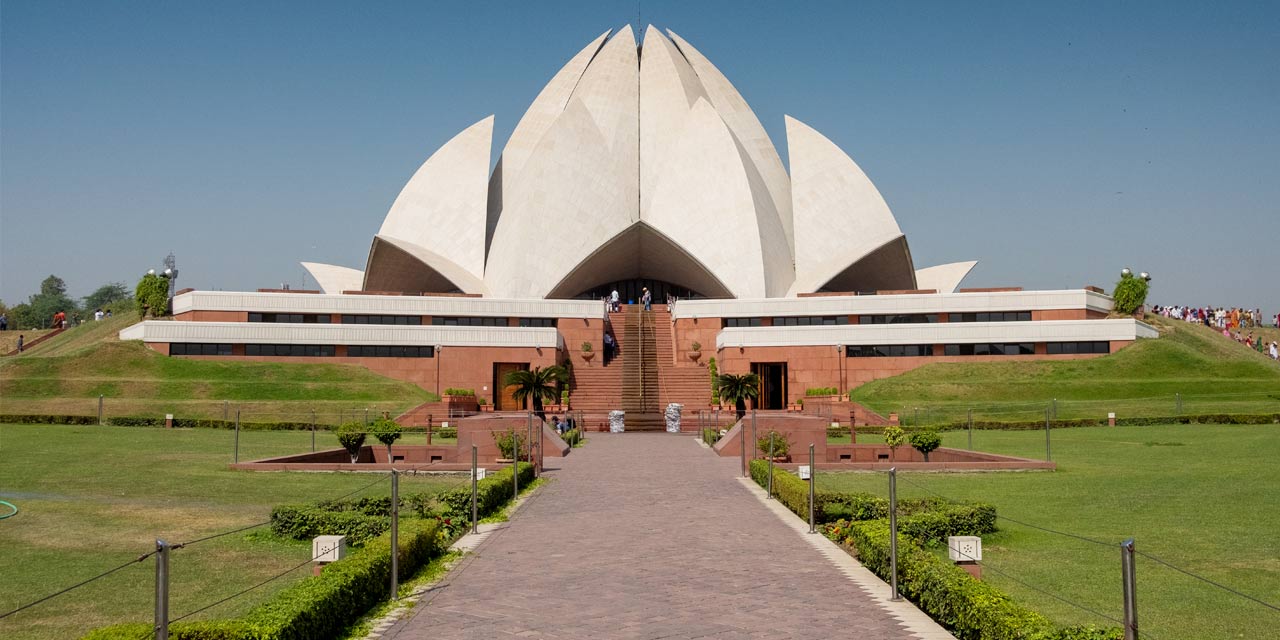
Lotus Temple is one of the most prominent attractions of Delhi. Known for its Lotus flower-like shape, the place is a Baha’i House of Worship. Opened for the public in December 1986, construction of The Lotus Temple cost around $10 million. The temple is not just known for its scenic value. It is the serenity and calm of Lotus Temple that attracts people from across the globe.
The best part of this temple is that people from any religion, caste or creed can visit it, without any inhibition or boundation. However, it remains a significant attraction amongst the tourists purely from the architectural point of view.
It has, in fact, won many awards. According to the statistics from the Government of India, the Baha’i House of Worship had 100 million visitors by April 2014. It is one of the most visited buildings of the world. A significant chunk of its visitors is architectural enthusiasts from across the globe, who fly down to see this architectural marvel and appreciate its beauty.
9. Purana Quila
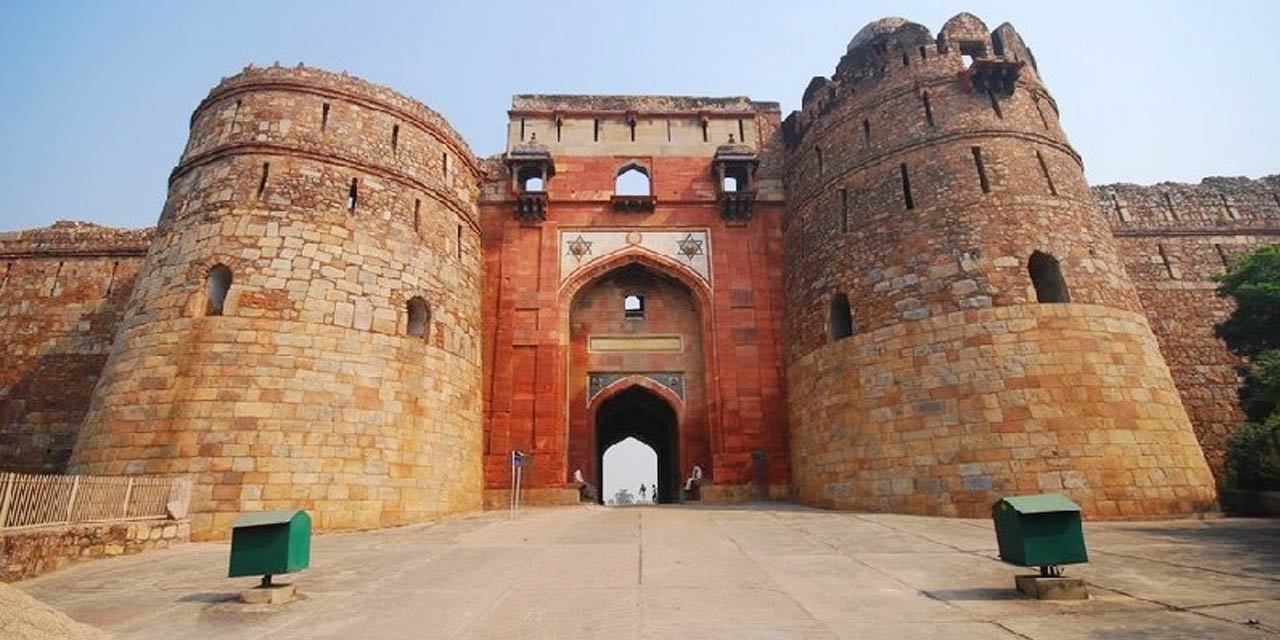
Amidst the glitz and glamour of Delhi city, stands an old yet attractive monument called Purana Quila or Old Fort. Purana Quila is spread in the area of almost two kilometers and is rectangular. History states that the monument was built under the reign of Humayun and Afghan Sher Shah Suri.
The fort is made up of walls that rise to 18 meters and has three arched gateways. The Bada Darwaza (Big gate) faces west and is used till date. The Humayun Gate, situated towards the south of the monument is known by the name as Humayun himself built it. Humayun’s tomb is visible from that gate. The third gate is the Talaqi Gate or the forbidden gate. All the gates are decorated with white and colored-marble inlays and blue tiles.
The gates give a good glimpse of Rajasthani architecture with their ornate overhanging balconies or jharokhas and pillared pavilions or chattris. While the grandeur of the architecture is sure to impress you, the interior architectures are also equally captivating.
Qila-i-Kuhna mosque and the Shermandal, created by Sher Shah, are the two noticeable architectures within the Purana Quila, that are worth a mention here.
Qila-i-Kuhna mosque is a single domed mosque built in pre-Mughal style in the year 1541. The mosque has five gateways in horse-shoe architecture and is an example of pointed arch architecture, that was followed later by a lot of Mughal buildings.
On the other hand, the Sher Mandal, that is named after Share Shah, is a double-storeyed octagonal tower of red sandstone. Sher Shah began the construction of the building, but Humayun completed it after he recaptured the fort.
Purana Quila is now being used as a picnic cum tourist spot and is quite popular amongst the localites and the tourists traveling to Delhi.
10. Akshardham Temple
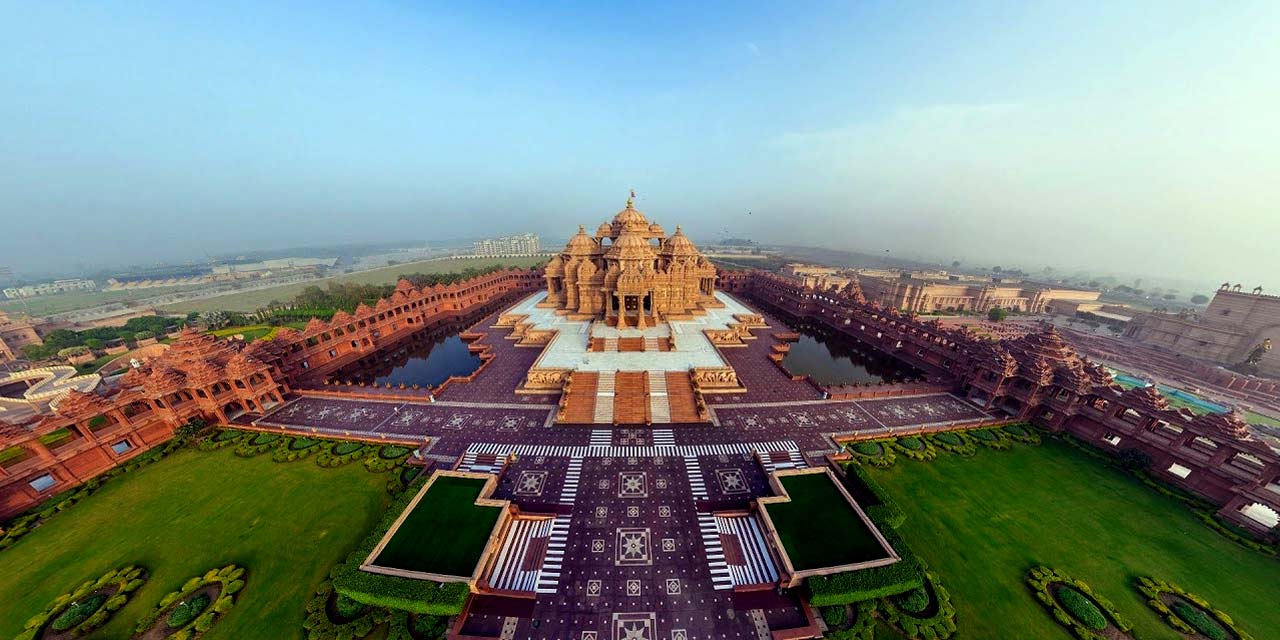
Swaminarayan Akshardham Temple, also known as Akshardham, is one of the most important social, religious and cultural places of Delhi. BAPS has constructed the temple. It is inspired by Yogiji Maharaj and is created by Pramukh Swami Maharaj.
Officially opened on 6th November 2005, by Dr. A P J Abdul Kalam, the Akshardham Temple attracts at least 70 percent of the tourists coming to the city. Akshardham Temple, Delhi, is the successor of Akshardham Temple, Gandhinagar, Gujarat and is built according to Vastu Shastra and Panchatantra Shastra.
The main shrine of the temple is the central point and is the main attraction of the temple. There are various exhibition halls created in the complex that displays an excellent sense of design and technology.
Some of the noticeable features of the Akshardham temple complex include Sahaj Anand water show, an Abhisheka Mandap, a thematic garden and three exhibitions namely Sahajanand Darshan (Hall of Values), Neelkanth Darshan (an IMAX film on the early life of Swaminarayan as the teenage yogi, Neelkanth), and Sanskruti Darshan (a cultural boat ride).
The beauty of Akshardham Temple is its architecture. It presents a mix of architectural styles from across the country. It is built of 234 ornately carved pillars, 20,000 murtis of sadhus, acharyas, and devotees and has nine beautifully crafted domes. The temple houses murtis of Swami Narayana, Shiv Parvati, Radha Krishna, Sita Ram and Lakshmi Narayan.
11. Gurudwara Bangla Sahib
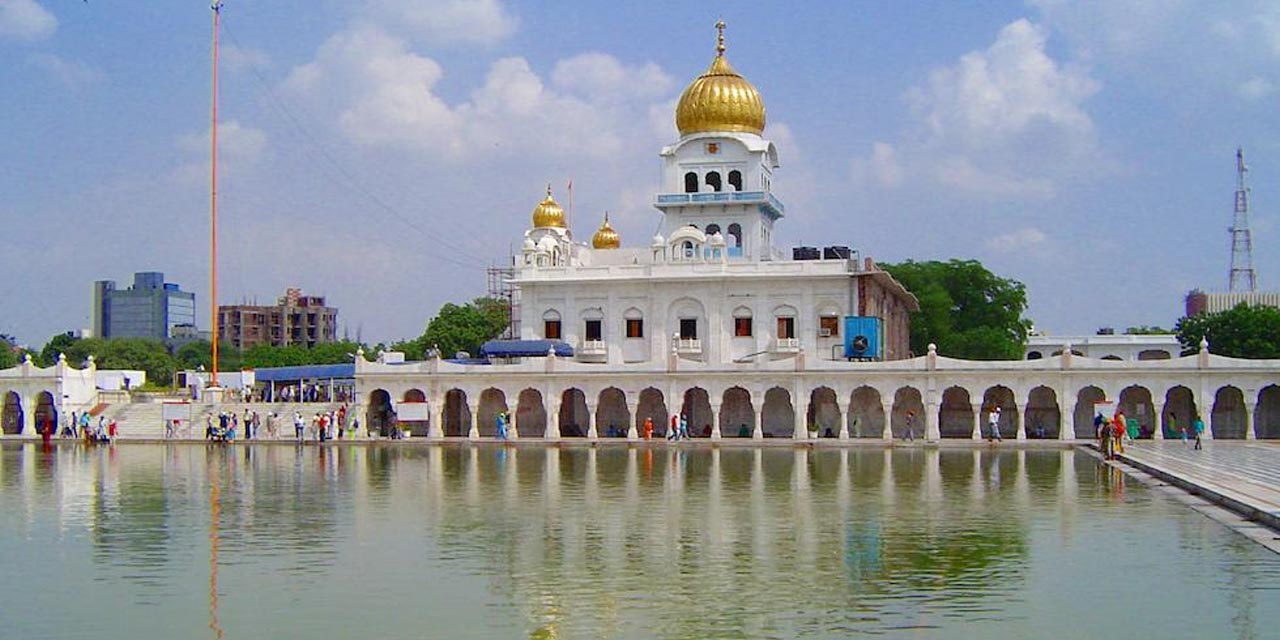
No matter what religious belief you follow, Gurudwara Bangla Sahib in Delhi is a must-visit place for you. It is one of the most famous Sikh Gurdwaras in the city as well as in the country. It is known for its association with eighth Sikh Guru, Guru Har Krishan Singh.
Built as a small shrine by Sikh General Sardar Baghel Singh in 1783, Gurudwara Bangla Sahib is situated on Baba Kharak Singh Marg in Connaught Place, New Delhi. Its golden dome and a large flagpole called Nishan Sahib make you recognize the place from a distance too.
It is interesting to note that Gurudwara Bangla Sahib was originally a bungalow, that belonged to Raja Jai Singh and was known as Jaisingh Pura palace. It is believed that Guru Har Krishan Singh used to reside in the bungalow during his stay in Delhi in 1664.
There was smallpox and cholera epidemic that was spread in the city. He served a lot of sufferers with aid and water from a small well within the house. Later, he caught the diseases himself and died on 30th March 1664. Raja Jai Singh constructed a small tank on that well, which exists even today.
It is believed that the water of that tank has healing properties and people carry it with them all over the world. The gurdwara campus also houses a hospital, a library and a higher secondary school and Baba Baghel Singh Museum.
12. Lakshmi Narayan Temple
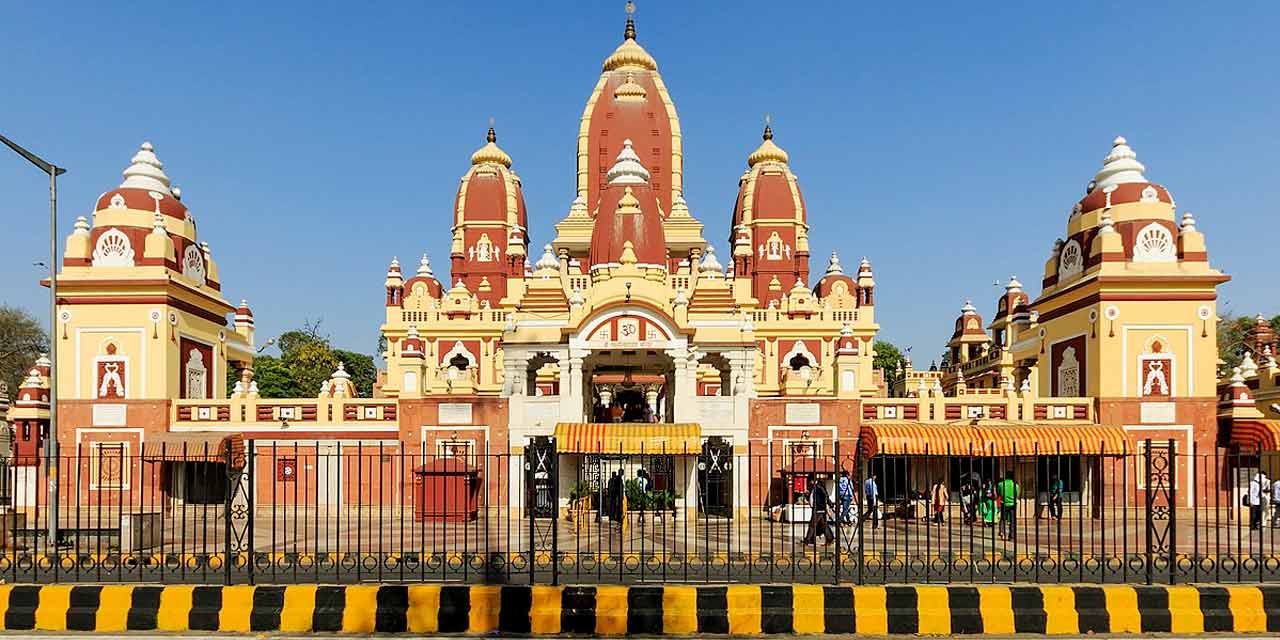
Better known as Birla Temple, the Lakshmi Narayan Temple is dedicated to Lord Lakshmi Narayan. Lakshmi Narayan refers to Lord Vishnu, also known as Narayan when he is with his consort Lakshmi. Although a Hindu temple, it is open to people of all religions and castes.
Built by industrialist Baldeo Das Birla and his sons, the temple was inaugurated by Mahatma Gandhi on the condition that it will be open for people of all religions. It was built from 1933 to 1939 and was the first large Hindu temple in Delhi.
The Birla temple is spread over 7.5 acres of land and has a large garden, shrine, fountains, and a hall called Geeta Bhawan for discourses. The temple is a significant attraction for tourists and localites on special occasions like Janmashtami and Diwali.
The temple’s architecture gives a sense of modern Indian architecture. It was designed by Sris Chandra Chatterjee, a leading proponent of the “Modern Indian Architecture Movement. Over hundred skilled artisans from Benaras were put to the task of making the idols for the temple, which was inspired by Nagara style of temple architecture.
The artisans crafted the idols of Hindu lords with marble stone sourced from places like Jaipur. The architects had used Kota stone from Makrana, Agra, Kota, and Jaisalmer for the construction of the temple premises. A whole lot of artificial landscapes and greenery in the campus is inviting and soothing. So the next time you are in Delhi, don’t miss out of ticking it in your list.
13. Hauz Khas Complex

Amidst the fascinating youth junction of Delhi city, Hauz Khas, is an old time charmer called Hauz Khas Complex. Situated in the southern part of the city, Hauz Khas complex comprises of a few exciting elements including a water tank, a tomb, a mosque, Islamic seminary and some pavilions. The Hauz Khas Complex gives a fair sense of 13th century Delhi Sultanate reign.
Although Hauz Khas adds to the list of some of the most excellent commercial and residential places of the city, the Hauz Khas Complex holds the old world charm. The water tank, for instance, was built during Alauddin Khilji’s reign to meet the water supply needs of newly built fort at Siri.
The size of the tank has now shrunk substantially due to encroachment and siltation. However, in its present state, it is quite well maintained. In fact, Delhi Development Authority makes constant efforts to preserve the tank.
Another attraction in Hauz Khas Complex is the tomb of Firoz Shah. Firoz Shah Tughlaq is known to have made significant contributions to the history of Delhi. He died at the age of ninety years after his continuous illness between 1385 and 1388. Interestingly, Firoz Shah had built a domed tomb for himself within the precincts of Hauz Khas.
Hauz Khas village was also known for being a large congregation of Islamic Scholars and students who came to the Madrasa for their Islamic Education. It was also termed as the Medieval Centre of Learning in India by some renowned historians.
14. Dilli Haat
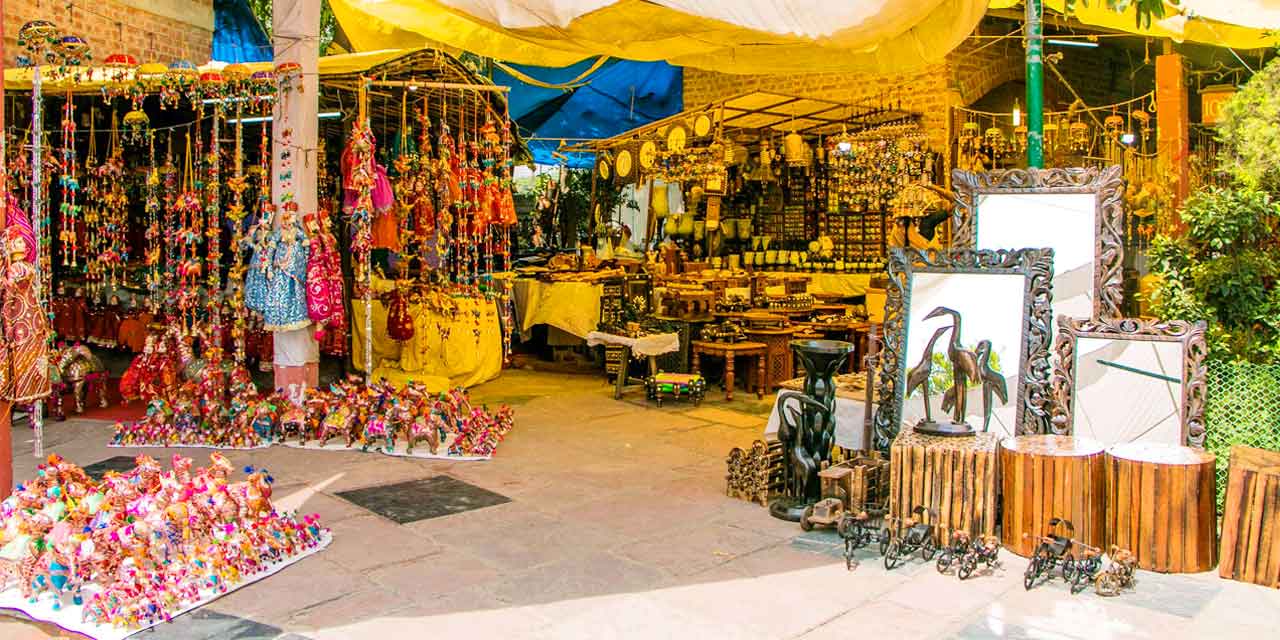
For all those who want to enjoy the true spirit of Delhi in a few hours, a visit to Dilli Haat is a must. Food and shopping are in the air of Dilli Haat. It is an open aircraft bazaar and food plaza located in the southern part of the city. Dilli Haat has a paid entrance system and is run by Delhi Tourism and Transportation Development Corporation.
Dilli Haat is a permanent market and is unlike a traditional weekly market. However, some sellers do rotate in the marketplace on a fortnightly basis. You will find unique products including rosewood and sandalwood carvings, embellished camel hide footwear, sophisticated fabric and drapery, gems, beads, brassware, metal crafts, and silk & wool fabrics. Exhibitions are being hosted in the exhibition hall of the haat, for promoting handicrafts and handlooms.
Being centrally located, Dilli Haat is pretty accessible from all modes of transport. While you visit Dilli Haat and wish to buy something from there, do not miss out on bargaining for the price. Dilli Haat is as much a family picnic spot as it is a shopping destination. Local families come to the place for fun and frolic and spending some quality time with each other. It is also a meet-up area for college students, especially girls.
There are some fantastic food vendors, who put up their stalls in Dilli Haat. While you get to taste some local delicacies, you also get a flavor of some state oriented dishes. Like the handicrafts, the food served in Dilli Haat also gives a fair sense of the culture of the country.
Do ensure that you have some time in hand to visit nearby places as well, including Sarojini Nagar market. Sarojini market is another local, ultra cheap and fantastic market of Delhi, like Lajpat Nagar. Pretty close to Dilli Haat, Sarojini market attracts a lot of young crowd for providing some cool fashion clothes and accessories at unbelievable prices.
15. Raj Ghat
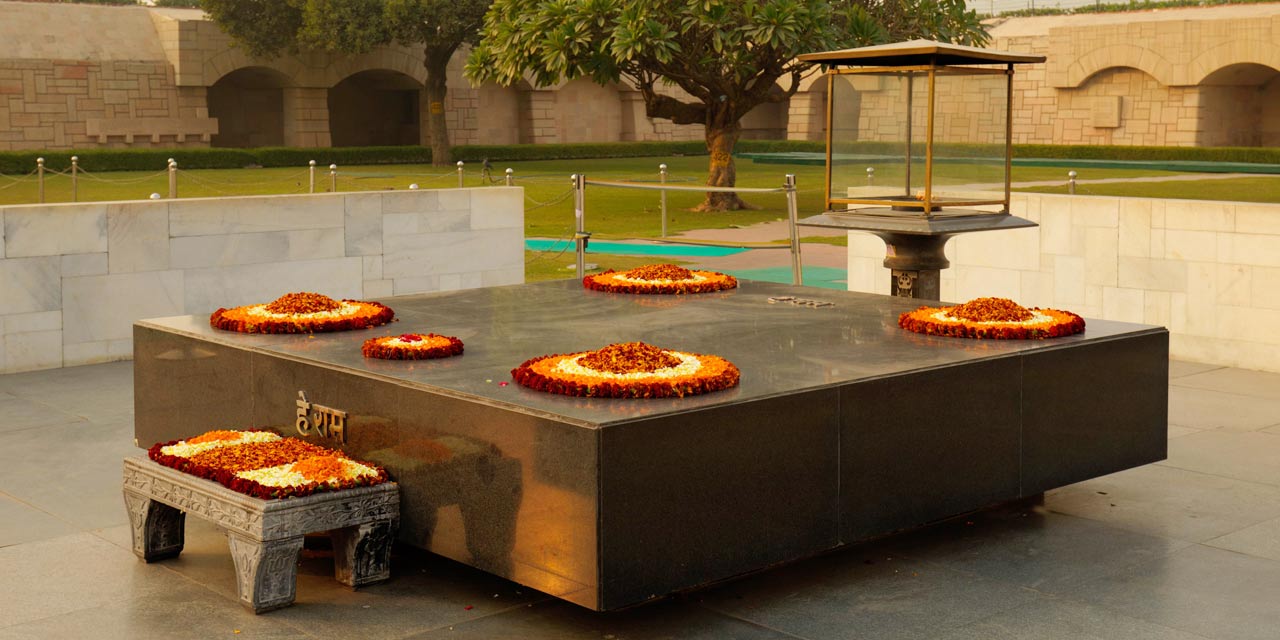
In the older part of Delhi, lies a cool and calm place called the Raj Ghat. Raj Ghat is a memorial dedicated to the Father of the Nation Mahatma Gandhi. It is a black marble platform, built on the spot of Mahatma Gandhi’s cremation. It was built on 30th January 1948, a day after his assassination. The memorial is left open under the sky, and an eternal flame burns on end.
Located on the banks of River Yamuna, Raj Ghat is situated on Mahatma Gandhi Road. The place is high on the list of politicians, state guests, and historians. One must remove his shoes before entering the walls of the Raj Ghat. Outside the walled architecture, is a lawn with some natural greenery.
While you visit the Raj Ghat to pay tribute to Gandhiji, do not miss out on Shantivan, which is the Samadhi of India’s first prime minister Pandit Jawaharlal Nehru. Shantivan is located towards the north of Raj Ghat. Adjacent to Shantivan is Ekta Sthal, where K R Narayana, the tenth president of the country was cremated in 2005.


